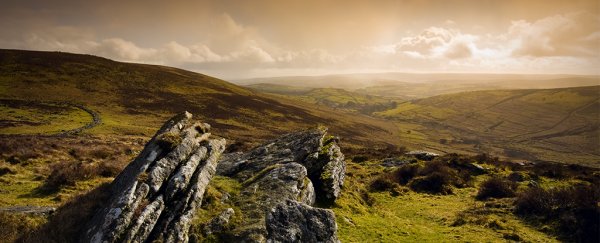In the wake of the last great ice age, humans flooded across Europe in slow, creeping tides.
A new study suggests some of those mass migrations might have changed the landscape more than others. And, strangely, it's not the people we might have expected that had the biggest impact.
By comparing the timing of significant migrations with changes in vegetation, researchers from across the UK and Europe have found the first farming communities to till the land had a surprisingly small impact on the ecology.
The same can't be said for a second wave of Bronze Age migrants trudging their way west from the Russian steppes, whose movements were associated with a dramatic reduction in broad-leaf forests and an increase in pasture and grassland.
The study relies on a range of assumptions and caveats, so some caution is required. With that in mind, the results add to the emerging story of a Europe transformed by successive waves of cultures introducing new languages, new genes, and new ways of survival.
Pull at the genetic tapestry that is modern Europe and you'll quickly find the threads lead back to different cradles around the Asian continent.
One of the oldest traces its way into the Anatolian Peninsula, a land now dominated by Turkey. Once hunter-gatherers, the populations picked up a few farming tricks from their neighbours roughly 11,000 years ago before inching their way northwest.
DNA left by this Neolithic wave of Anatolian crop-growers can still be found in modern European populations, along with the genetic legacy of other mass migrations.
The researchers used publicly available ancient and present-day genome studies to produce a map showing the distributions of three different genetic populations across Europe throughout the ages.
One comprised of the original hunter-gather populations who had established themselves across the post-ice-age landscape. The second were the Anatolian farmers, who came next.
A third population are today referred to as the Yamnaya culture, a name borrowed from a Russian word for 'pit' in reference to their signature style of grave.
These people moved into Europe during the late Copper to early Bronze Age more than 5,000 years ago, emerging from the lands to the north of the Black Sea and bringing with them relatively advanced technology of horses and wheels, not to mention a talent for digesting milk.
Comparing the way each of the gene pools dispersed revealed a significant difference in the speed of the two migrations.
Perhaps to nobody's surprise, the Bronze Age Yamnaya took far less time to establish themselves than the Anatolian farmers. Having horses no doubt helped, but there is also the possibility that the land had already been made traversable.
Looking back to the earlier wave of Neolithic agriculturalists, the genetic map shows two prongs slowly marching across the land. A close examination of land cover and climatic variable maps failed to show any great shifts in the kinds of vegetation aligning with their branching movement.
The researchers do note that other studies have identified local impacts on the environment in some parts of the continent, but overall their influence doesn't seem to have been widespread.
When it comes to the Bronze Age migration, the changes were comparatively dramatic, with a large scale depletion in forest and the establishment of grasslands.
"As these peoples were moving westward, we see increases in the amount of pasture lands and decreases in broad leaf forests throughout the continent," says geogeneticist Fernando Racimo from the University of Copenhagen.
It's important to keep in mind that it's difficult to prove causation. Changes to the climate could also have played a key role in the evolving ecology, laying out feeding grounds for the horses and opening the land to travel.
But the models used by the researchers strongly suggest that swelling populations along the pathway of Bronze Age migration were responsible for the changing vegetation.
Relying heavily on DNA data with its known idiosyncrasies leaves plenty of room for debate, as does the potential for untested variables to be behind the changes to Europe's greenery.
The story of Europe's past is far from complete, but every new detail adds new insights into the ways past cultures might have affected the landscape as they moved, telling us a thing or two about how the land will continue to change in the future.
"European landscapes have been transformed drastically over thousands of years," says Jessie Woodbridge, a physical geographer at the University of Plymouth in the UK.
"Knowledge of how people interacted with their environment in the past has implications for understanding the way in which people use and impact upon the world today."
This research was published in PNAS.
